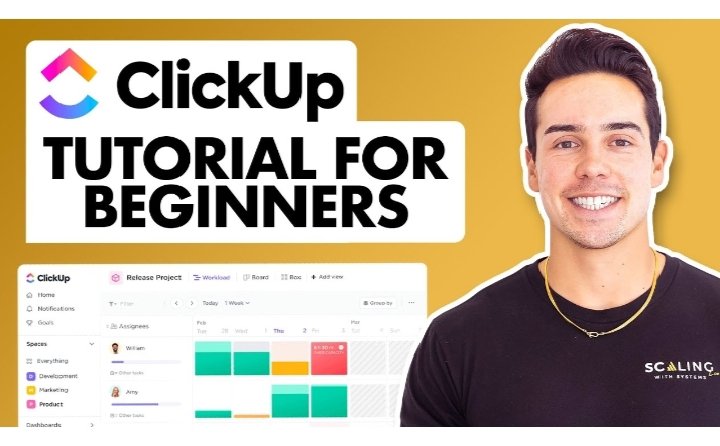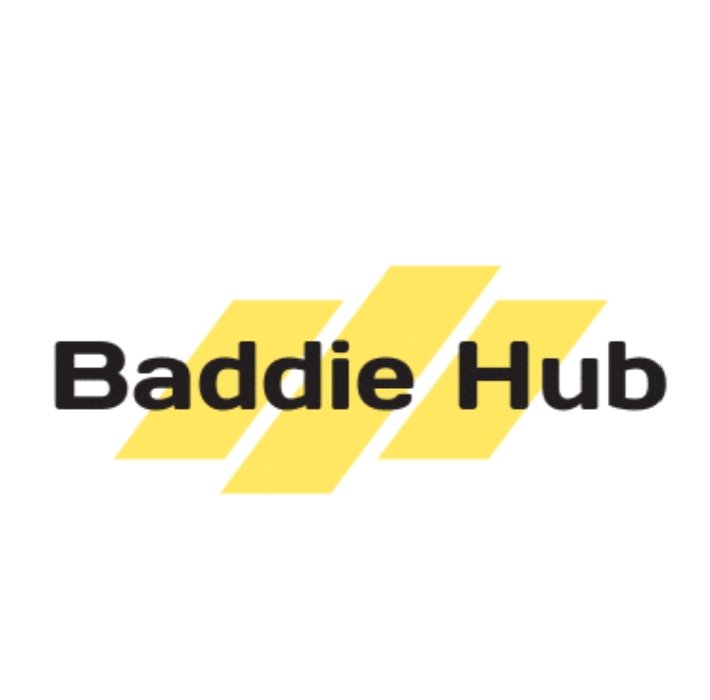Skyrocket Productivity: How to Master ClickUp App for Stress-Free, Efficient Project Management
Introduction to ClickUp: Your All-in-One Productivity Solution
ClickUp is a versatile project management tool designed to streamline workflows, enhance collaboration, and boost productivity. Whether you’re managing a small team or juggling personal tasks, Clickup app customizable features make it a game-changer. From task management to time tracking, its intuitive interface helps users stay organized and focused, eliminating chaos and inefficiency.
This guide will walk you through mastering ClickUp to optimize your workflows. By leveraging its powerful features, you can transform how you manage projects, saving time and reducing stress. We’ll cover everything from setting up your workspace to advanced automation, ensuring you harness Clickup app full potential for seamless productivity.
Ready to revolutionize your project management? This step-by-step tutorial provides actionable insights to set up and use ClickUp effectively. With a focus on practical tips and SEO-optimized strategies, this article is your ultimate resource for mastering ClickUp. Let’s dive in and unlock stress-free, efficient workflows
Also Read More ; https://clicksup.org/ultimate-guide-to-pappedeckel/
Setting Up Your ClickUp Workspace for Success
Creating a ClickUp workspace is the first step to streamlined project management. Start by signing up on Clickup app website and selecting a plan that suits your needs—free, unlimited, or business. Once registered, name your workspace, add your team members, and customize your branding to align with your organization’s identity.
Next, organize your workspace using Clickup app hierarchy: Spaces, Folders, and Lists. Spaces are high-level categories for different projects or teams, like “Marketing” or “Development.” Folders within Spaces group related tasks, while Lists break tasks into actionable items. This structure ensures clarity, making it easy to navigate and manage tasks efficiently.
Customize your workspace with Clickup app views—Board, List, Calendar, or Gantt—to match your workflow style. For example, use Board view for Kanban-style task tracking or Calendar view for deadline-driven projects. By tailoring your workspace, you’ll create a stress-free environment that maximizes efficiency and sets the foundation for productive project management.
Creating and Managing Tasks in ClickUp
Tasks are the core of Clickup app functionality, allowing you to break projects into manageable pieces. To create a task, navigate to a List in your workspace, click “New Task,” and add details like task name, description, and due date. Assign tasks to team members to ensure accountability and clarity.
Enhance tasks with subtasks, checklists, and dependencies to manage complex projects. Subtasks break larger tasks into smaller steps, while checklists ensure no detail is overlooked. Dependencies link tasks to ensure they’re completed in the right order, preventing bottlenecks and maintaining smooth workflows.
Clickup app task management also supports custom statuses like “To Do,” “In Progress,” or “Complete” to track progress. Use priority flags to highlight urgent tasks and add tags for easy filtering. By mastering task creation and management, you’ll keep projects on track, reduce stress, and boost team efficiency.

Leveraging Clickup app Views for Enhanced Productivity
ClickUp offers multiple views to visualize tasks, each suited for different project needs. The Board view, inspired by Kanban, displays tasks as cards moving through stages, perfect for agile workflows. List view provides a detailed, spreadsheet-like overview, ideal for managing task details and priorities.
Calendar view is excellent for deadline-focused projects, showing tasks by due date for easy scheduling. Gantt view, on the other hand, maps out task timelines and dependencies, helping you plan long-term projects with precision. Switch between views to find the best fit for your team’s workflow.
Customizing views enhances efficiency by aligning with your project’s unique requirements. For example, filter Board view to show only high-priority tasks or use Calendar view to track milestones. By leveraging Clickup app views, you’ll gain clarity, streamline task management, and ensure projects stay on track, stress-free.
Using Clickup app Time Tracking to Optimize Workflows
Clickup app built-in time tracking feature helps you monitor how time is spent on tasks, boosting accountability and efficiency. To start, enable time tracking in your workspace settings, then click the timer icon on any task to log hours. You can also add manual time entries for flexibility.
Integrate time tracking with apps like Toggl or Harvest for advanced reporting. Use Clickup app time estimates to set realistic task durations, ensuring you allocate resources effectively. This feature is especially useful for freelancers or teams billing clients by the hour, as it provides accurate data for invoicing.
Review time tracking reports in Clickup app Dashboard to identify bottlenecks and optimize workflows. For example, if a task consistently takes longer than estimated, adjust your planning to avoid delays. By mastering time tracking, you’ll enhance productivity, reduce inefficiencies, and maintain stress-free project timelines.
Automating Repetitive Tasks with ClickUp Automations
Clickup app automation feature saves time by handling repetitive tasks. Go to your workspace settings and select “Automations” to create rules like automatically assigning tasks to team members when a status changes or sending notifications for overdue tasks. This reduces manual work and ensures consistency.
Set up automations for common workflows, such as moving completed tasks to a “Done” list or updating due dates based on dependencies. You can also integrate ClickUp with tools like Zapier to connect with external apps, automating cross-platform tasks like sending Slack notifications or updating Google Sheets.
By automating repetitive processes, you free up time for high-value work, reducing stress and boosting efficiency. Regularly review your automations to ensure they align with evolving project needs. With Clickup app automation, you’ll streamline operations and keep your team focused on what matters most.
Collaborating Effectively with Your Team in ClickUp
Clickup app collaboration tools make teamwork seamless and efficient. Invite team members to your workspace and assign roles like Admin, Member, or Guest to control permissions. Use the Comments section in tasks to discuss updates, tag colleagues, or attach files for clear communication.
Enable real-time collaboration with Clickup app Chat view, where teams can discuss projects without leaving the platform. Share task updates via email notifications or integrate with Slack for instant updates. You can also use Clickup app Whiteboard feature for brainstorming sessions, visually mapping ideas and strategies.
Effective collaboration reduces miscommunication and keeps projects on track. Encourage team members to use Clickup app Docs for shared documentation or assign tasks with clear deadlines to maintain accountability. By fostering a collaborative environment, you’ll ensure stress-free teamwork and boost overall productivity.
Customizing ClickUp Dashboards for Insightful Reporting
Clickup app Dashboards provide a centralized view of your project’s progress. Create a Dashboard by selecting “Dashboards” in your workspace and adding widgets like task status summaries, time tracking reports, or workload views. Customize widgets to focus on metrics relevant to your goals.
Use Dashboards to monitor team performance, track project milestones, or analyze time spent on tasks. For example, a workload widget shows who’s overburdened, helping you reassign tasks to balance workloads. Share Dashboards with stakeholders for transparent reporting, ensuring everyone stays informed.
Regularly update your Dashboard to reflect current project priorities. By leveraging Clickup app customizable Dashboards, you’ll gain actionable insights, streamline decision-making, and maintain efficient, stress-free project oversight. This keeps your team aligned and projects on course for success.
Integrating ClickUp with Other Tools for Seamless Workflows
ClickUp integrates with over 1,000 apps, enhancing its functionality and streamlining workflows. Connect ClickUp to tools like Slack, Google Drive, or Zoom via the Integrations menu in your workspace settings. For example, link Google Calendar to sync task due dates or use Zapier for custom integrations.
Integrations reduce the need to switch between apps, saving time and reducing stress. For instance, syncing ClickUp with Slack allows task updates to appear in real-time, keeping teams aligned. Similarly, integrating with Google Drive ensures documents are accessible within tasks, improving collaboration.
Test integrations to ensure they meet your needs and periodically review them for relevance. By connecting ClickUp with your favorite tools, you’ll create a cohesive, efficient workflow that maximizes productivity and keeps your projects running smoothly.

Using Clickup app Goals to Track Project Success
Clickup app Goals feature helps you set and track project objectives, ensuring alignment with your vision. Create a Goal in your workspace by defining a target, like “Complete Marketing Campaign,” and link it to specific tasks or lists. Assign due dates and owners for accountability.
Break Goals into smaller Targets, such as completing a set number of tasks or hitting a revenue milestone. Track progress with visual indicators like percentage completion or task counts. This keeps your team motivated and focused on achieving measurable outcomes.
Review Goals regularly to assess progress and adjust strategies as needed. By using Clickup app Goals, you’ll maintain clarity, align team efforts, and achieve stress-free project success. This feature ensures your projects stay on track and deliver impactful results.
Optimizing ClickUp for Agile Project Management
ClickUp is ideal for agile project management, supporting methodologies like Scrum and Kanban. Use Board view to create sprints, organizing tasks into columns like “Backlog,” “In Progress,” and “Done.” Assign story points to estimate task complexity and track sprint progress.
Enable Clickup app Sprint Automations to streamline agile workflows, such as moving completed tasks to the next sprint or notifying team members of sprint reviews. Use the Burndown Chart widget in Dashboards to monitor sprint progress and identify bottlenecks early.
Agile management in ClickUp fosters flexibility and collaboration, reducing stress by keeping teams aligned. Regularly review sprint outcomes to refine processes and improve efficiency. With Clickup app agile tools, you’ll master dynamic project management and drive successful outcomes.
Managing Documents and Knowledge Bases in ClickUp
Clickup app Docs feature centralizes project documentation, making it easy to create, share, and collaborate on documents. Create a Doc in your workspace, add text, images, or tables, and organize it with headers for clarity. Link Docs to tasks for quick access to relevant information.
Use Docs to build knowledge bases, such as onboarding guides or process manuals, ensuring team members have access to critical resources. Share Docs with specific team members or make them public for broader access, enhancing collaboration and reducing confusion.
Regularly update Docs to keep information current and relevant. By leveraging Clickup app Docs, you’ll create a stress-free knowledge hub that boosts efficiency and ensures your team has the resources needed to succeed.
Scaling ClickUp for Large Teams and Enterprises
ClickUp scales effortlessly for large teams and enterprises, supporting complex workflows and multiple departments. Create multiple Spaces for different teams, like HR or Sales, and customize permissions to control access. Use Folders and Lists to organize department-specific tasks.
Leverage Clickup app Enterprise plan for advanced features like Single Sign-On (SSO), custom branding, and priority support. Use Dashboards to monitor cross-department performance, ensuring alignment with organizational goals. Integrations with tools like Salesforce enhance enterprise workflows.
Scaling ClickUp ensures large teams stay coordinated and efficient, reducing stress across departments. Regularly train team members on new features and review workspace structures to maintain clarity. With ClickUp, enterprises can achieve seamless, productive project management.
Advanced Tips for Power Users of ClickUp
Power users can maximize Clickup app potential with advanced features like Custom Fields and Relationships. Add Custom Fields to tasks for specific data, like budget or client details, to tailor workflows. Use Relationships to link tasks across Spaces, ensuring cross-project dependencies are clear.
Explore Clickup app API for custom integrations or automation beyond built-in options. For example, create scripts to sync ClickUp with proprietary tools. Use the Command Center to quickly navigate tasks, Docs, or Dashboards, saving time and boosting efficiency.
Continuously experiment with advanced features to uncover new ways to optimize workflows. By mastering these tools, power users can create stress-free, highly efficient project environments that drive exceptional results in ClickUp.
Troubleshooting Common ClickUp Challenges
Even with Clickup app intuitive design, users may face challenges like task overload or integration issues. To manage task overload, use filters to focus on high-priority tasks and set realistic due dates. Regularly review Dashboards to identify bottlenecks and reassign tasks as needed.
Integration issues can arise from outdated API keys or incompatible apps. Double-check integration settings and ensure apps are updated. If problems persist, consult Clickup app Help Center or contact support for quick resolutions.
Proactively addressing challenges keeps your ClickUp experience stress-free. Join Clickup app community forums to learn from other users and share tips. By troubleshooting effectively, you’ll maintain smooth workflows and maximize productivity.
Measuring ROI with Clickup app Analytics and Reports
Tracking return on investment (ROI) in ClickUp ensures your efforts deliver value. Use Dashboards to monitor key metrics like task completion rates, time spent, and goal progress. Create custom widgets to track project-specific KPIs, such as budget adherence or client satisfaction.
Analyze time tracking reports to assess team efficiency and identify areas for improvement. For example, if a project consistently exceeds time estimates, refine your planning or allocate more resources. Share reports with stakeholders to demonstrate Clickup app impact on productivity.
Regularly review analytics to optimize workflows and justify Clickup app value. By measuring ROI, you’ll ensure your projects are efficient, cost-effective, and stress-free, driving long-term success for your team or business.
FAQs: Mastering ClickUp for Stress-Free Productivity
How do I choose the right ClickUp plan for my team?
Select a plan based on your team size and needs. The Free plan suits small teams, while Unlimited or Business plans offer advanced features like time tracking and automations. Evaluate your requirements and test features during the trial period.
Can ClickUp integrate with my existing tools?
Yes, ClickUp integrates with over 1,000 apps, including Slack, Google Drive, and Zapier. Set up integrations in the workspace settings to streamline workflows and ensure compatibility with your current tools.
How do I manage large projects in ClickUp?
Use Spaces, Folders, and Lists to organize tasks hierarchically. Leverage Gantt view for timeline planning and automations to streamline repetitive tasks, ensuring large projects remain manageable and stress-free.
What’s the best way to onboard new team members in ClickUp?
Create a Doc with onboarding guides and link it to relevant tasks. Assign simple tasks initially and use Comments to provide guidance. Schedule training sessions to familiarize new members with Clickup app features.
How can I improve team collaboration in ClickUp?
Use Chat view for real-time discussions, share Docs for centralized knowledge, and assign clear task roles. Integrate with communication tools like Slack to keep updates seamless and boost team alignment.






